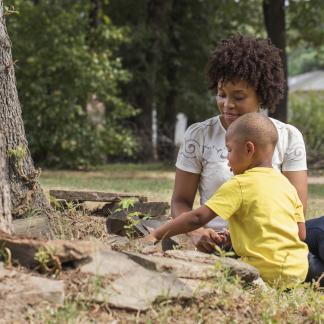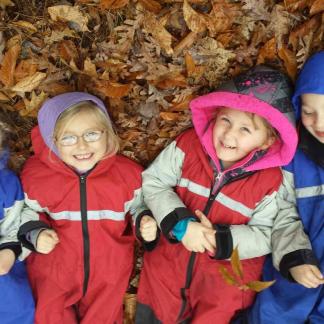In Chicago, the forests close at dusk. If the evening woods are “lovely, dark and deep,” as Robert Frost described them, few Chicagoans would know, as the entrances to forest preserve parking lots are locked every night. So I got very excited when, one weekend this past spring, the forest management agency organized an evening hike to observe the woodcocks’ beautiful courtship flight. An environmental educator led me and two dozen other people, by flashlight and off-trail, about half-a-mile to a clearing in the woods.
Sure enough, after a few minutes, we heard a loud, buzzy peenting on the ground directly in front of us, followed by a ghostly twitter overhead as the air tried to keep up with the bird’s wing feathers on ascent. In A Sand County Almanac, Aldo Leopold lyrically narrates what happens next: “Up and up he goes, the spirals steeper and smaller, the twittering louder and louder, until the performer is only a speck in the sky. Then, without warning, he tumbles like a crippled plane, giving voice in a soft liquid warble that a March bluebird might envy.”
It’s difficult to remember for how long we remained in our wide-eyed and open-mouthed state of astonishment, but we all felt that we glimpsed a sliver of life’s magic that evening. Yet, on our hushed walk back to the parking lot, the question on my mind was, “Why was my son the only child in our group?” This had been the kind of awe-inspiring experience that can make a lifetime impression on a young body, mind, and spirit. Why weren’t there more families with children on the hike that night?
Sure, many children may have already been getting ready for bed at eight o’clock, even on a Saturday night, but the question has stayed with me. Are we doing all we can to bring these kinds of moments of wonder into as many children’s lives as possible? And more specifically, can the early childhood environmental education profession lead the charge in enabling substantively more young children to experience the mystery and awe of an evening like the one my son and I experienced that spring night?
I believe that some recent developments outside of our own profession may point to some answers.
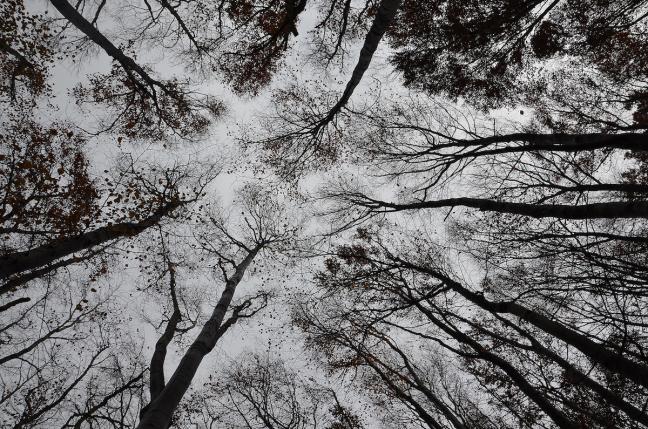
A Maker Nation
The early childhood environmental education field has come a long way in the last decades, but the “maker” movement – a varied and diverse group of tinkerers and creative individuals who dream up and make everything from crafts to robots – has positively erupted into the mainstream in just a few years. In 2015, a “Maker Faire” hosted by the White House sought to shine a spotlight on the “incredible range of creativity and ingenuity unlocked by the maker movement” and catalyze partnerships that “give more students access to the tools, mentors and spaces they need.” Today, my public library has a “Maker Space” that hosts various kids’ programs every day, from building a chair using only newspapers to designing and 3D-printing your own Minecraft characters.
Two things stand out in this rise of a “Maker Nation” that have nothing to do with the spaces, technology, or skills involved in the actual creative process but are the basic ingredients of building a movement: one, an empowering message that everyone can create and therefore join the movement, and, two, a relentless focus on weaving connections across fields, disciplines, and community institutions. Educators and entrepreneurs, scientists and summer camp counselors, artists and architects are all encouraged to support and inspire children to tinker and make. As Mark Hatch, the author of The Maker Movement Manifesto, put it, participating in the maker movement is a personal journey about "the excitement and joy of giving those you love a piece of yourself."
Do we have examples of similar ingredients – an affirming message and a commitment to expanding our impact well beyond our own profession – to greatly increase young children’s access to nature-based experiences? I believe we do.
An Empowering Message
Since its inception, early childhood environmental education has recognized play as children’s premier activity. According to the NAAEE Early Childhood Environmental Education Guidelines for Excellence, play, along with exploration, “are integral to the child’s well-being, a fundamental way of learning, intrinsically motivating, and satisfying.” Play that occurs in spaces that offer ample, repeated opportunities to observe and manipulate natural materials while accommodating a diversity of users and abilities can create a rich context for developing a lifelong positive connection to nature. Indeed, recent research suggests that free play and exploration in nature during childhood may more effectively foster both environmental literacy and political-ecological citizenship in adulthood than school-based or other more structured environmental education programs.
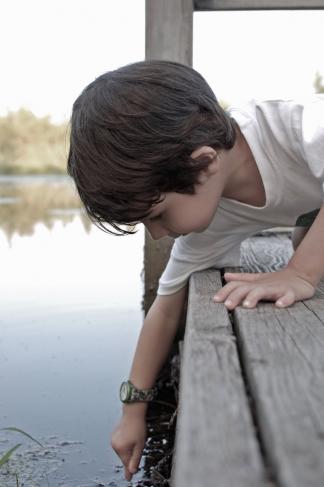
Play can bring many partners to the table, but we, as environmental educators, need to both inspire and support these partners to infuse play with opportunities for wonder and connection with the natural world. Moments of wonder engage children’s senses, elicit their curiosity, and connect them with something outside of themselves. As Rachel Carson so compellingly wrote in The Sense of Wonder, these kinds of moments arise when children and adults have fun outside together, are receptive to the natural world around them, discover new and unknown things, and marvel at nature’s mystery and beauty.
Rachel Carson’s empowering message is that every caregiver already has what it takes to raise perceptive, inquisitive children who are curious and care about the larger world in which they live.
How do we marry this affirming message to an engagement approach that can help to catalyze a movement?
Inspiring Action in Others
The latest addition to the NAAEE Guidelines for Excellence series focuses precisely on how environmental educators can join forces “with diverse partners to forge common purposes and collaborate toward shared outcomes.” The document, drawing on best practices in fields such as education and community development, encourages environmental educators to expand community members’ roles from “learners” to “participants,” to commit to long-term relationship building, and to learn, plan, and implement collaboratively. In my own work with Chicago’s early childhood environmental education community, I have been fortunate to see examples of such partnerships:
- The nature preschool that combines classrooms at regular intervals with a public preschool’s special education program, in order to provide students of different abilities the opportunity to learn together through play and engagement with nature;
- The environmental education agency that collaborated with a children’s soccer league to plan team-building exercises that enabled immigrant children to play in nature and strengthen their connection with each other and with their new home;
- The alliance of preschool teachers, early childhood museum and environmental educators, and recreation agency staff that jointly plans an annual Inspiring Nature Play conference to learn from each other and nurture professional relationships that grow throughout the year.
What the early childhood environmental educators involved in these partnerships have recognized is that they can enable many more children to learn from and care for nature if they work with and through others. These educators are agents of change not only in the lives of the children they serve at their organizations but also in the community at large.
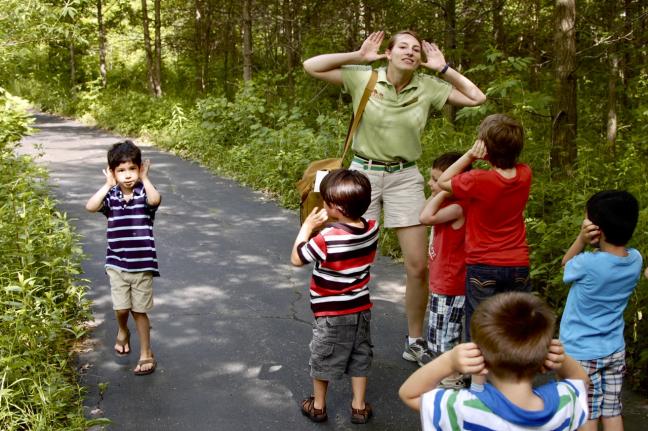
Image credit: Emilian Geczi
Bringing Wonder Closer to Home
Significantly increasing the amount of resources spent on mobilizing other professionals and caregivers to bring nature into young children’s lives is not necessarily an easy task for organizations whose first duty is to care for their own programs, people, and facilities. But if we want to build a movement, we need to nurture collective action.
An empowering message and a commitment to inspire and support others have tremendous benefits: they build an entire community’s capacity to help children connect with nature and care for it, they ensure program relevancy, they bridge gaps in program audiences, and they position early childhood environmental educators as resources to others in the community. This can be a powerful recipe for making moments of wonder possible not only in our nature centers, nature preschools, and nature playgrounds, but also in daycares, museums, kindergartens, summer camps, and other places where children play and learn every day. It will be one indication that we are on the right track when more public libraries complement their Maker Spaces with “bridges to nature,” as they do in this town in Wisconsin.
I understand now that it’s unrealistic to expect more families with children to sign up for a guided night hike in the woods – however special and filled with wonder such an activity might be – unless they have first experienced, closer to home, “the joy, excitement, and mystery of the world we live in,” as Rachel Carson put it. Fortunately, we have promising examples of messages and engagement strategies that give many more adults the confidence to share the wonders of the natural world with young children in everyday life.
Our tasks are to document and share these examples, and to build more support for programs, places, forums, and events that enable early childhood environmental educators to learn and plan side-by-side with caregivers and professionals from other backgrounds.
About the Author
Emilian Geczi, Ph.D., is Director of the Natural Start Alliance. He can be reached at [email protected].



